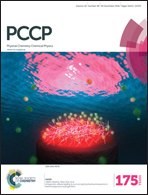Synthesis of MnO2 nanoparticles and their effective utilization as UV protectors for outdoor high voltage polymeric insulators used in power transmission lines†
Abstract
Polymeric outdoor insulators derived from polydimethyl siloxane (PDMS) are replacing conventional ceramic insulators in high voltage power transmission lines because of their improved electrical, mechanical and hydrophobic performance. Major impediments like failure of polymeric insulators due to natural aging by UV radiation from sunlight and electrical tracking have limited their usage. Herein, it is demonstrated about the usage of manganese dioxide based nanoparticles as an effective agent to prevent the UV accelerated aging of polymeric insulators. MnO2 nanoparticles of different shapes and dimension were synthesized using a single step wet chemical reaction between KMnO4 and methyl acetate. Namely, 2D δ-MnO2 nanosheets, 1D α-MnO2 nanowires and 3D α-MnO2 nanorods were formed. These nanoparticles were extensively characterized by various techniques. In the scope of the study, the δ-MnO2 (10−5 S cm−1; 1 MHz) nanosheet demonstrated the lowest electrical AC conductivity and a higher band gap compared to the 1D (10−4 S cm−1; 1 MHz) and 3D variety (10−4 S cm−1; 1 MHz). Owing to the lower electrical conductivity of the δ-MnO2 nanosheet, it was further incorporated at different filler volumes in the polymeric matrix (blend of polydimethyl siloxane/ethylene vinyl acetate) as a UV protector material for the polymer based high voltage composite polymeric insulator. The UV protection ability, induced by the δ-MnO2 nanosheet, was achieved without adversely affecting other properties of the formulated insulator compound material. The optimum properties of the composite were found to be obtained at 3 phr (three parts of δ-MnO2 nanosheet per hundred parts of polymer) loading of the nanosheet. The current work will promise to pave a new pathway for the generation of UV resistant high voltage power transmission line insulator materials. It would be interesting in the future to study the effect of incorporation of manganese dioxide based nanosheets on the UV resistant properties of different polymeric matrices.


 Please wait while we load your content...
Please wait while we load your content...